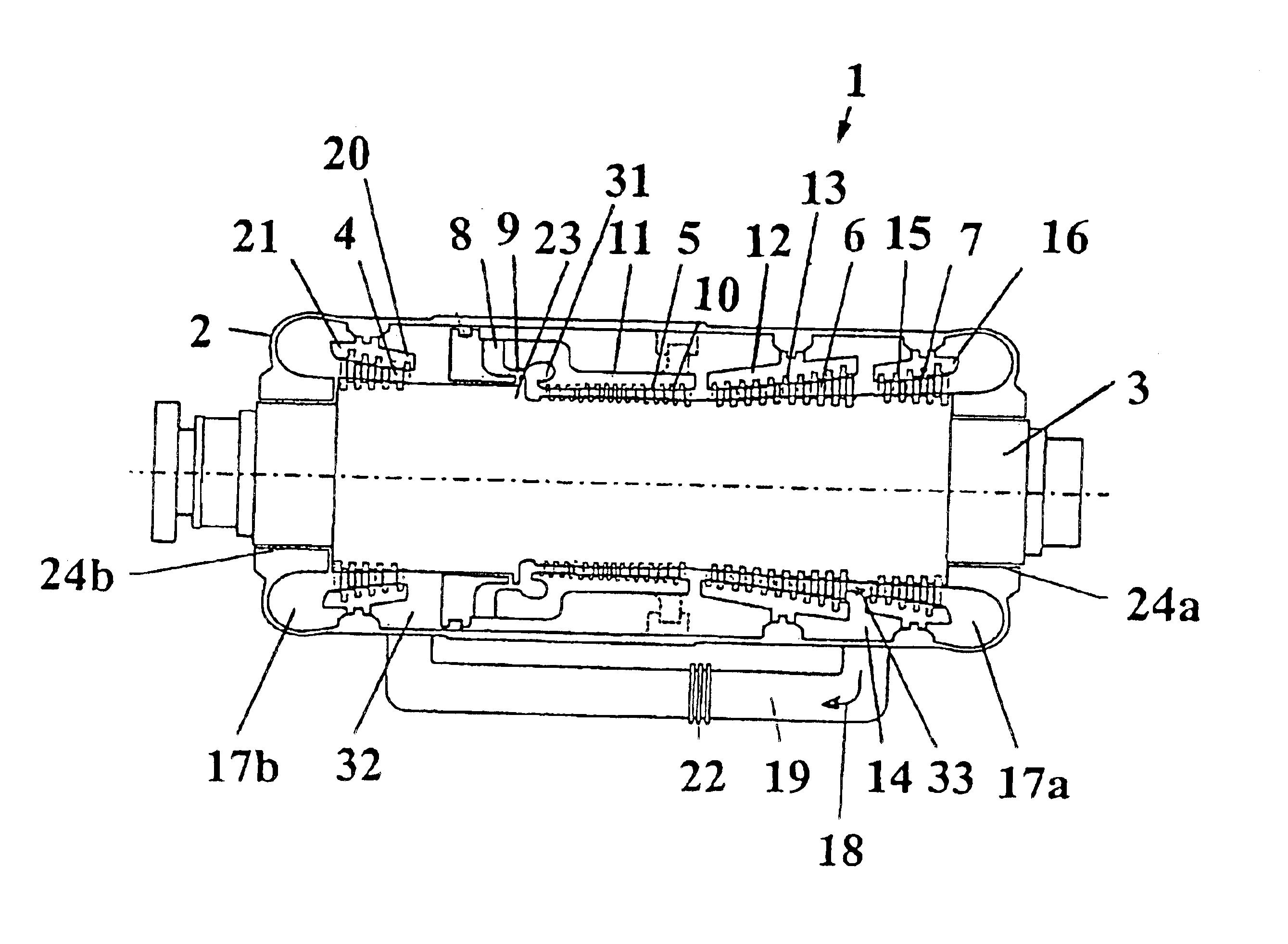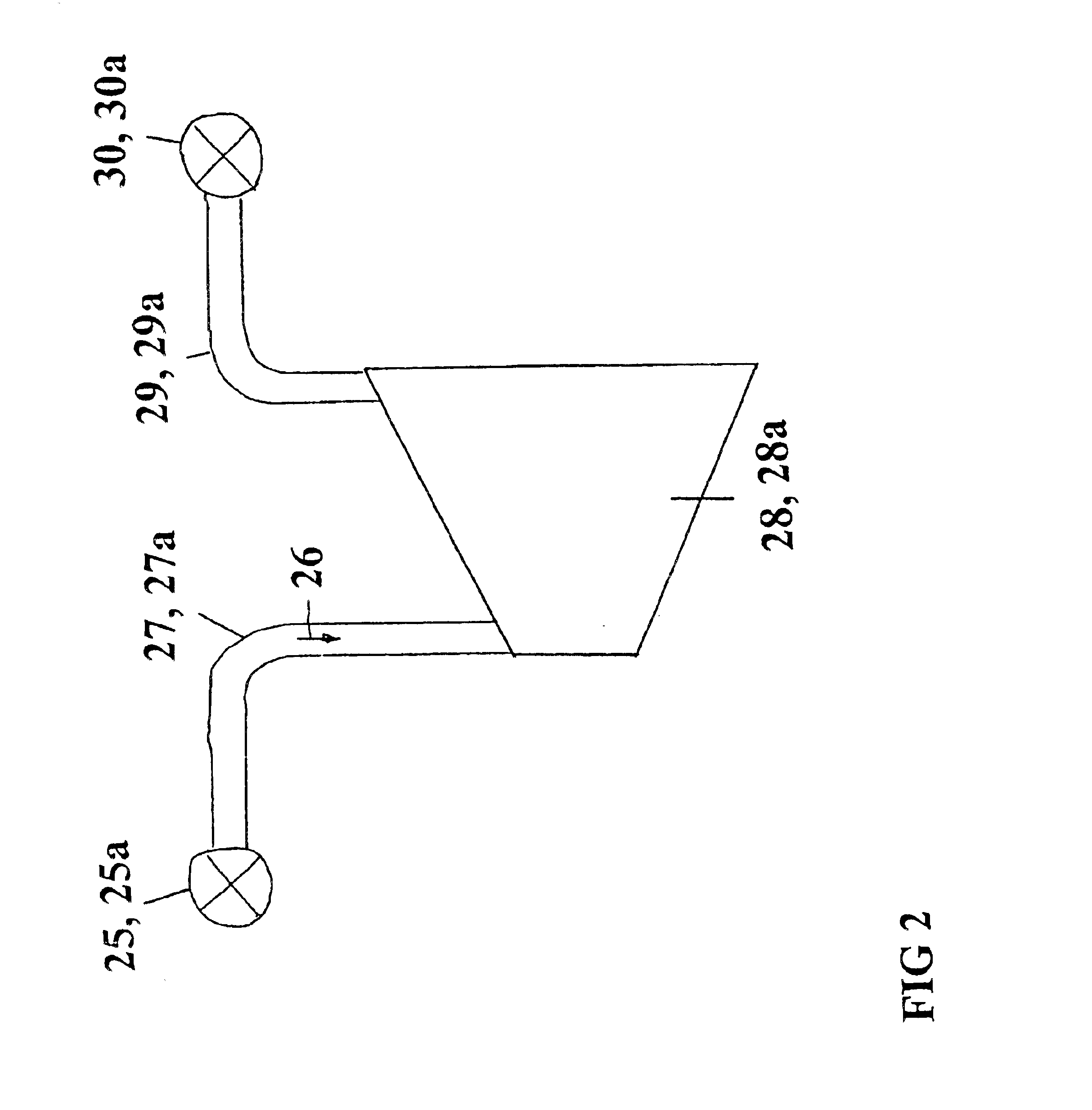Fluid-flow machine with high-pressure and low-pressure regions
- Summary
- Abstract
- Description
- Claims
- Application Information
AI Technical Summary
Benefits of technology
Problems solved by technology
Method used
Image
Examples
Embodiment Construction
FIG. 1 shows a schematic longitudinal section through a fluid-flow machine 1 having an outer casing 2, a plurality of inner casings 11, 12, 16, 21 and a rotor 3. Four blade regions 4, 5, 6, 7 are arranged on the rotor 3. In this exemplary embodiment, the four blade regions are divided into two inner blade regions 5, 6 and two outer blade regions 4, 7. The two outer blade regions 4, 7 are arranged in opposition to one another and point away from the inner blade regions 5, 6.
Upstream of the first inner blade region 5, an inflow opening 8 is contained in the outer casing. A control stage 9 is provided starting from the inflow opening 8 in the direction of the first inner blade region 5. An expansion region 31 follows the control stage 9 in the direction of the first inner blade region 5. In the exemplary embodiment presented, guide blades 10 are attached to the inner casing 11 in the first inner blade region 5.
Following the first inner blade region 5 is a further inner blade region 6. ...
PUM
 Login to View More
Login to View More Abstract
Description
Claims
Application Information
 Login to View More
Login to View More - R&D
- Intellectual Property
- Life Sciences
- Materials
- Tech Scout
- Unparalleled Data Quality
- Higher Quality Content
- 60% Fewer Hallucinations
Browse by: Latest US Patents, China's latest patents, Technical Efficacy Thesaurus, Application Domain, Technology Topic, Popular Technical Reports.
© 2025 PatSnap. All rights reserved.Legal|Privacy policy|Modern Slavery Act Transparency Statement|Sitemap|About US| Contact US: help@patsnap.com



